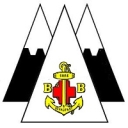History 1965-1975
The following transcript was prepared by the founder of the BBMC (Ted Ward) on how the BBMC came into being in 1965 and its first ten years.
Working with Seniors in BB - The Birth of BBMC in 1965.
If you are a BB Officer today, you will be confronted with the problems of keeping the Company programme fresh and attractive as Boys go up through the Sections. How, we ask, can we retain the over-14 group? And you may think that you are the first generation for whom this is a major issue. In 1963, BB Officers were presented with the Haynes Report, from a Committee which had looked at the issue of retaining the older Boy, among others. BB thinking at the time was that we had a wellplanned Badge System, very good ideas on programmes, and that there was a smoothly progressive programme of activities from entry to The Life Boys at 9 years, through to the age limit at 18 years. Brigade literature of the time made a strong point of the progressive programme. There was in fact, some considerable pride in the BB on this question. We were never short of ideas for our meetings. We did retain quite a lot of older members, but many of us thought that we were still losing too many. Most rival movements were worried by the same problem.
Having looked very thoroughly at what was actually being done by Companies throughout the UK; Haynes members pronounced that they found “little evidence of such a progressive programme”. It did seem that while we could still engage the interest of those for whom the Company could provide an active role as NCOs, to give them new challenges, there was in fact little new in our programmes beyond age 15 for anyone not capable or willing for such a role. This revelation was a considerable shock to the Brigade as a movement. Perhaps the only glimmer of hope lay in BB engagement in the relatively new Duke of Edinburgh’s Award. Perhaps not everyone knows that prior to Haynes, the Junior Section was “The Life Boys”, and in effect a separate movement from the BB Company even at local level.
The Haynes solution included the integration the Junior Sections. Much more radical was the proposal that we should devise new programmes to interest older members, and that it would be better, much better if these older members had a separate identity from the rest of BB. The idea of treating this group as seniors and of having Senior Sections was put forward at Brigade Council at Cambridge in 1963. There was bitter opposition from some quarters, although I could not at that time understand the arguments raised. After all, no-one wanted to compel others to implement Haynes. All we wanted was to try it out. At the vote, however, Haynes was accepted, and we were permitted to try out the idea. Following this, BBHQ devised an excellent new uniform for the seniors which was welcomed by those who would be wearing it.
Published on





